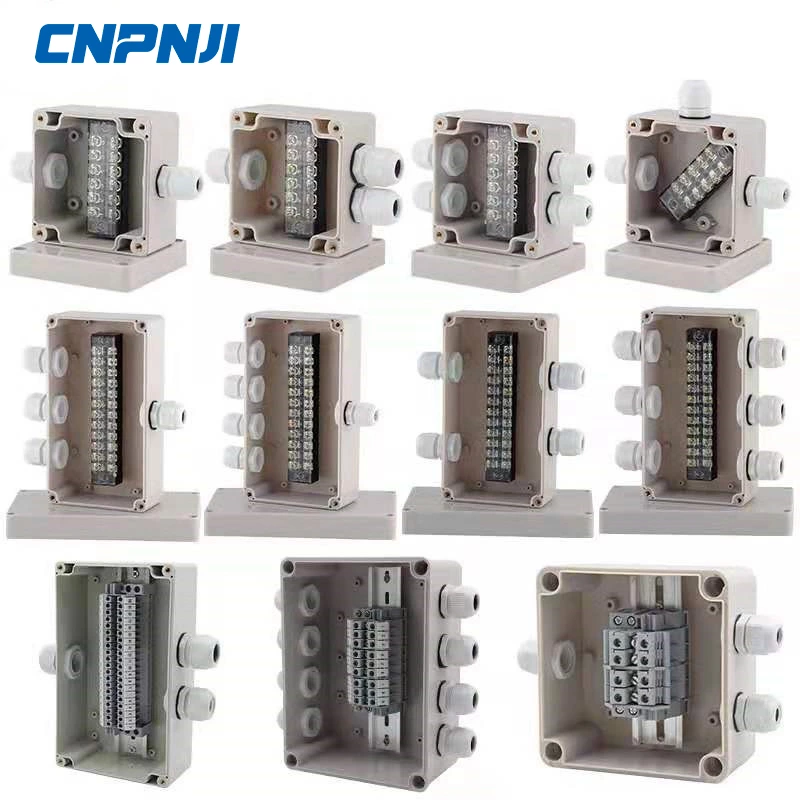Deep understanding of terminal boxes: analysis of functions, characteristics, and application scenarios
In modern electrical equipment, terminal boxes play a crucial role. It is not only a hub for circuit connections, but also a critical component for ensuring electrical safety. Terminal boxes, with their unique design, materials, and functions, meet the connection needs of various industrial and commercial equipment.
The size of a terminal box is usually determined by its application field and the number of terminals it needs to accommodate. Common terminal boxes in the market range in size from a few centimeters to tens of centimeters to meet different space limitations and current capacity requirements. In terms of color, for easy identification and maintenance, terminal boxes usually use bright colors such as yellow, blue, or gray, and sometimes come with identification labels to improve recognition.
The selection of materials is crucial for the performance of terminal boxes. High quality terminal boxes are usually made of materials that are resistant to high temperatures and impacts, such as polycarbonate (PC), ABS plastic, or metal materials. These materials not only ensure the durability and stability of the terminal box, but also maintain its performance in harsh environments.
In terms of internal structure, terminal boxes usually contain multiple terminal slots for installing and fixing terminal blocks. These terminals can be plug-in, screw type, or quick connect type to facilitate the connection of wires of different diameters and types. Internally, there are also isolation boards or strips designed to ensure electrical isolation between terminals and prevent the risk of short circuits or leakage.
Terminal boxes are widely used in industrial control systems, power systems, communication systems, lighting systems, and household appliances. In industrial control systems, terminal boxes are used to connect sensors, actuators, and other control components to ensure accurate signal transmission. In the power system, terminal boxes are used for high current connection points such as distribution boards and switchgear. In communication systems, terminal boxes are used to connect various communication interfaces and lines. In household appliances, terminal boxes are commonly used in the power supply part of appliances to provide safety for use.
In addition to basic functions, the design of the terminal box also takes into account ease of use and maintenance. For example, some terminal boxes are equipped with detachable front covers to facilitate user wiring and maintenance. Some terminal boxes also adopt anti misoperation design, such as terminals with protective doors, to prevent risks caused by non professional personnel's misoperation.
In summary, as an important component of electrical connections, the diversity of design, materials, and functions of terminal boxes enables them to meet the application needs of different occasions. Whether in extreme industrial environments or in daily household equipment, terminal boxes ensure the reliability and safety of electrical systems. With the advancement of technology, the design and function of terminal boxes will also be continuously optimized to adapt to the development trend of future electrical equipment.

